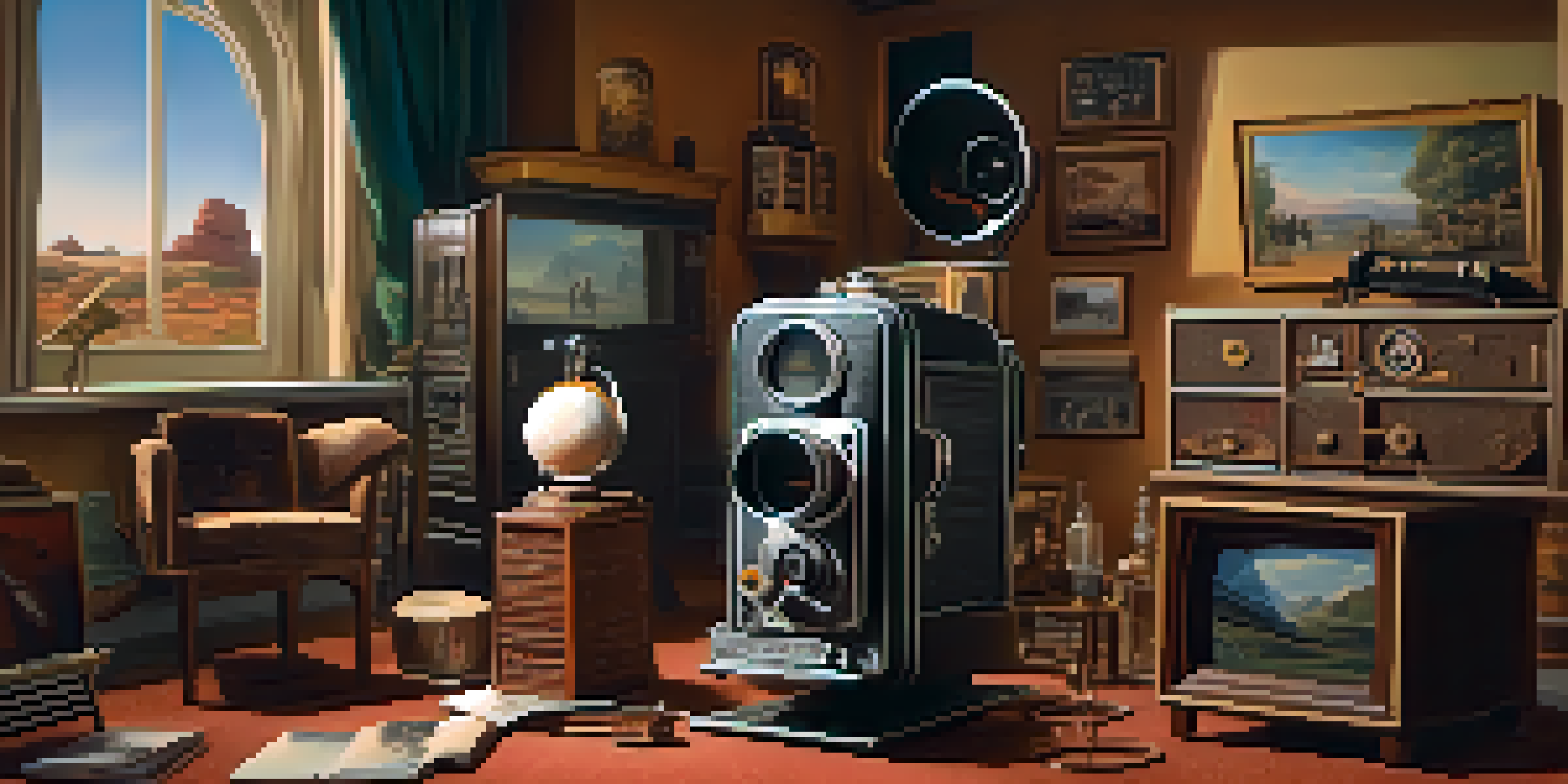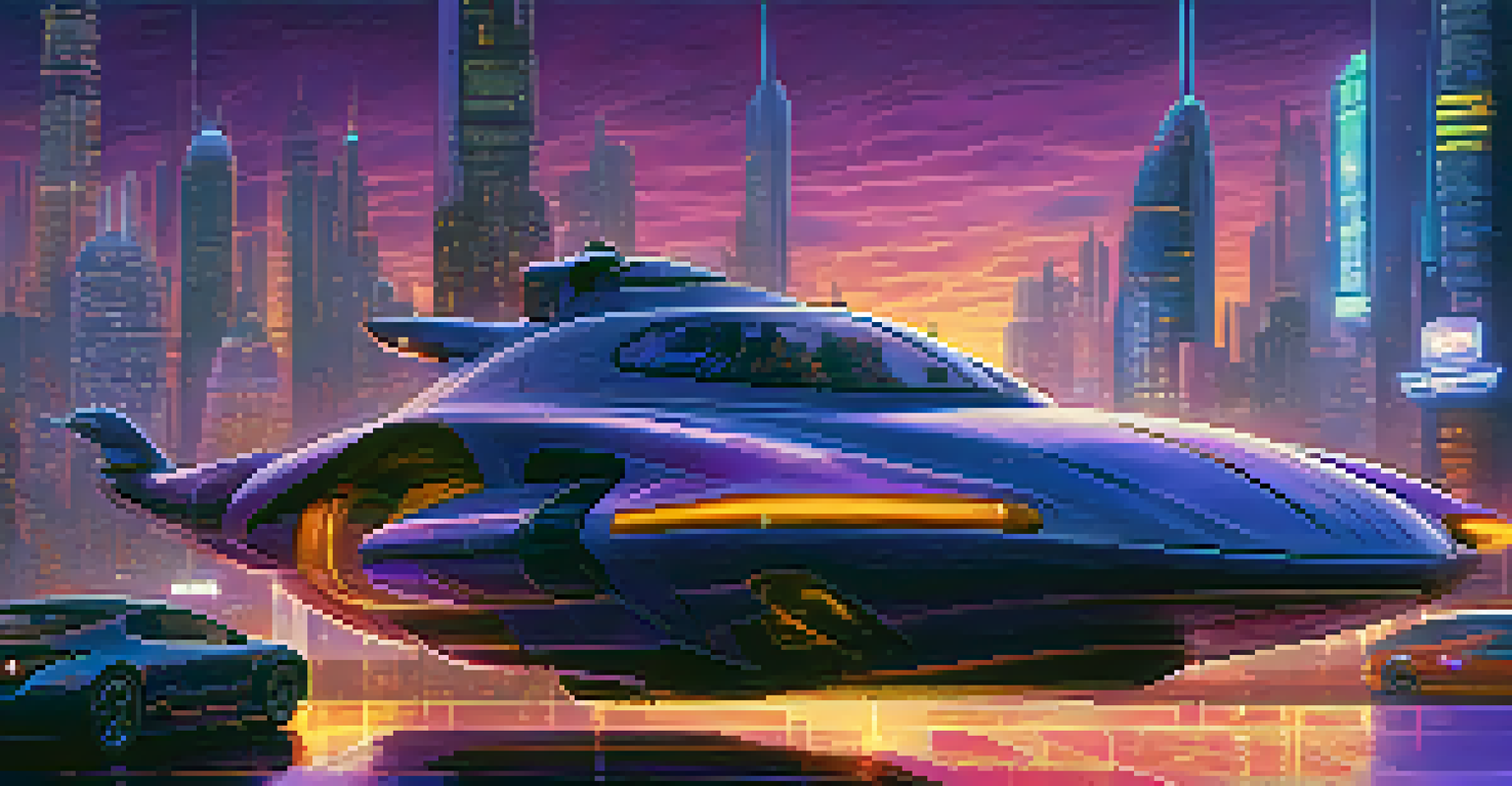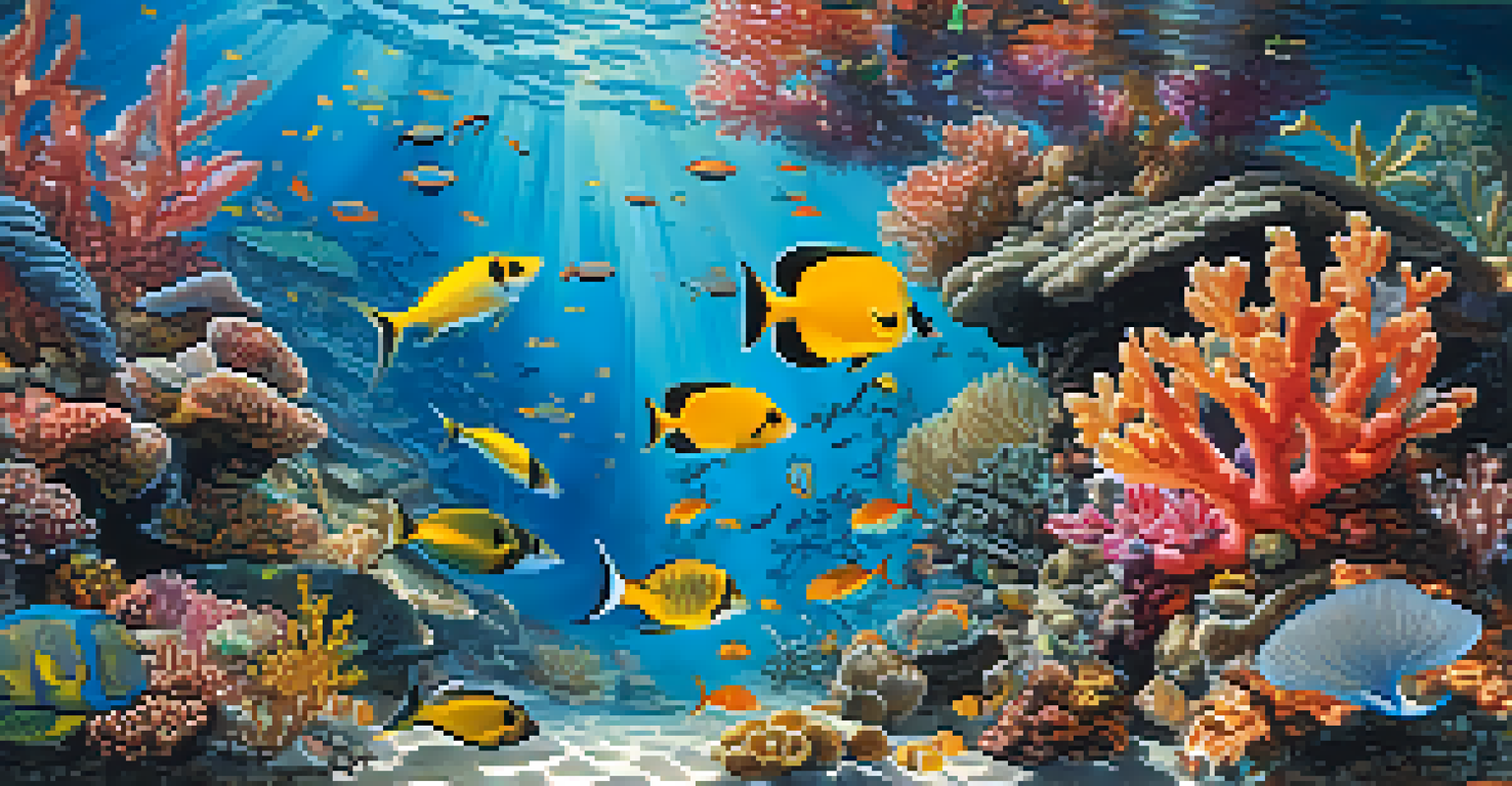Iconic Special Effects Films That Changed Cinematic History

The Dawn of Special Effects: A Look Back
The journey of special effects in cinema began long before CGI took center stage. Early pioneers like Georges Méliès used practical effects to enchant audiences, as seen in his 1902 film 'A Trip to the Moon.' This film not only showcased creativity but also laid the groundwork for future filmmakers to push the boundaries of storytelling.
The most important thing is to be able to create a world that feels real and engaging, regardless of the technology used.
As technology evolved, so did the methods of creating illusions on screen. From the use of miniatures in films like 'King Kong' (1933) to the pioneering work of Ray Harryhausen with stop-motion effects, these innovations captivated viewers and opened new avenues for creative expression.
These early films established a foundation for what would become a crucial aspect of filmmaking. They showed that the imagination could be brought to life on screen, inspiring generations of filmmakers to explore the possibilities of special effects.
Star Wars: A Galactic Leap in Effects Technology
When 'Star Wars' debuted in 1977, it revolutionized the landscape of special effects. George Lucas's vision combined practical effects with groundbreaking techniques like motion control photography, creating a universe that felt both expansive and believable. This innovation set a new standard for future blockbusters.

The iconic space battles and alien creatures showcased in 'Star Wars' were a testament to what could be achieved with creativity and technology working hand in hand. The film’s success not only spawned a franchise but also inspired countless filmmakers to experiment with their own special effects.
Evolution of Special Effects in Film
The journey from practical effects to CGI has transformed storytelling in cinema, inspiring filmmakers to push creative boundaries.
The legacy of 'Star Wars' is evident in today’s films, where high-quality effects have become a staple. It taught the industry that with imagination and technology, virtually any story could be told, leading to the explosion of sci-fi and fantasy genres.
Jurassic Park: Bringing Dinosaurs to Life
In 1993, 'Jurassic Park' took the world by storm, showcasing the power of computer-generated imagery (CGI) alongside practical effects. Directed by Steven Spielberg, the film brought dinosaurs back to life in a way that felt thrillingly real. This captivating use of technology changed audience expectations forever.
Special effects are just a tool. It’s about the story that you want to tell and how you use those tools to enhance that story.
The seamless integration of CGI with animatronics created a believable prehistoric world, immersing viewers in a thrilling adventure. The T-Rex scene, with its iconic roar and terrifying presence, remains one of the most memorable moments in cinematic history.
The success of 'Jurassic Park' proved that CGI was not just a gimmick but a powerful storytelling tool. It opened the doors for future films to embrace digital effects, leading to a new era of visual storytelling that continues to evolve.
The Matrix: Redefining Reality with Visual Effects
'The Matrix' (1999) introduced audiences to a cyberpunk world that blurred the lines of reality and illusion. Its innovative use of bullet time, a visual effect that allows the action to slow down while the camera moves at normal speed, captivated viewers and set a new benchmark for action films.
This groundbreaking technique changed how filmmakers approached action sequences, allowing for a more stylized and visually engaging experience. The film’s aesthetic and effects have influenced countless works in various genres since its release.
Technological Innovations in Cinema
Films like 'Star Wars' and 'Avatar' showcased groundbreaking techniques that set new standards for visual effects and audience engagement.
Moreover, 'The Matrix' challenged the very nature of storytelling in cinema, encouraging audiences to question their perceptions. The fusion of philosophy and technology in the film resonated with viewers, proving that special effects could elevate narratives to new heights.
Avatar: Pioneering 3D Technology and Motion Capture
James Cameron's 'Avatar' (2009) was a game-changer in the realm of visual effects, setting new standards in 3D technology and motion capture. The film's lush visuals and immersive world of Pandora captivated audiences, making it one of the highest-grossing films of all time.
Cameron’s use of advanced motion capture techniques allowed actors to bring their characters to life in a completely new way. This technology not only enhanced the visual storytelling but also deepened the emotional connection between the audience and the characters.
The success of 'Avatar' demonstrated the potential of 3D filmmaking, influencing a wave of films that followed. It encouraged filmmakers to explore new dimensions in storytelling, merging technology and creativity in a way that resonated with audiences globally.
Inception: Blurring Dreams and Reality with Effects
Christopher Nolan's 'Inception' (2010) pushed the boundaries of visual effects by crafting mind-bending sequences that explored the nature of dreams. The film's innovative use of practical effects, such as rotating hallways and zero-gravity fights, created a captivating experience that left audiences questioning reality.
Nolan's dedication to using real effects wherever possible, combined with CGI, resulted in a unique aesthetic that felt grounded despite its fantastical premise. The iconic city-bending scene is a prime example of how special effects can enhance storytelling by immersing viewers in a dreamlike state.
Future of Visual Storytelling
Emerging technologies like VR and AR are set to revolutionize how stories are told, making the audience active participants in the experience.
The film not only entertained but also sparked discussions about perception and consciousness, showcasing how special effects can serve a deeper narrative purpose. 'Inception' remains a benchmark for filmmakers looking to blend creativity with profound themes.
Mad Max: Fury Road: The Art of Practical Effects
'Mad Max: Fury Road' (2015) is a testament to the power of practical effects in an age dominated by CGI. Director George Miller emphasized real stunts and tangible effects, creating a visceral experience that resonated with audiences and critics alike. The film's action sequences are frenetic yet grounded, adding to the authenticity of the post-apocalyptic setting.
The use of real vehicles, stunts, and pyrotechnics not only elevated the film's excitement but also showcased the artistry involved in practical effects. Each chase and explosion was meticulously crafted, resulting in a visual feast that felt thrillingly real.

Fury Road's success highlighted a resurgence in practical effects, encouraging filmmakers to blend traditional techniques with modern technology. It served as a reminder that while digital effects are impressive, the raw energy of real-world stunts can create an unparalleled cinematic experience.
The Future of Special Effects: What Lies Ahead?
As technology continues to advance, the future of special effects in cinema remains bright and full of possibilities. Innovations like virtual reality (VR) and augmented reality (AR) are beginning to change how stories are told, offering immersive experiences that blur the line between the audience and the film.
Filmmakers are increasingly exploring ways to integrate these technologies into their narratives, creating interactive films that engage viewers on a new level. This shift could revolutionize storytelling, making audiences active participants in the cinematic experience.
While CGI and practical effects will continue to coexist, the evolution of technology promises even more breathtaking and engaging visual storytelling. The next generation of filmmakers will undoubtedly push the boundaries, creating films that we can only dream of today.